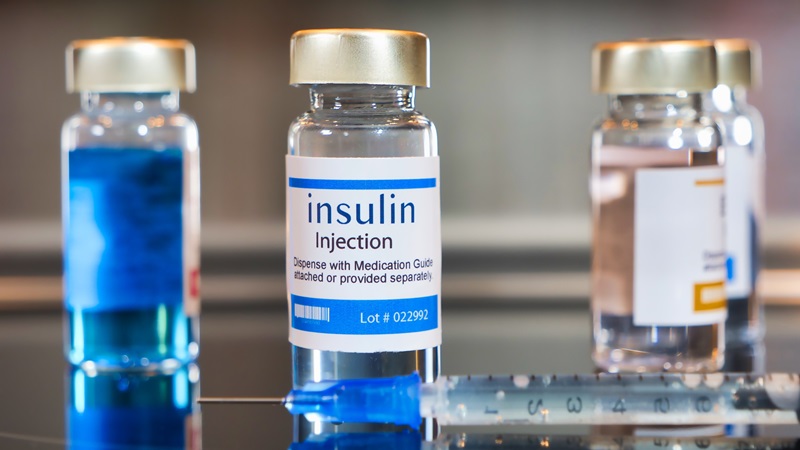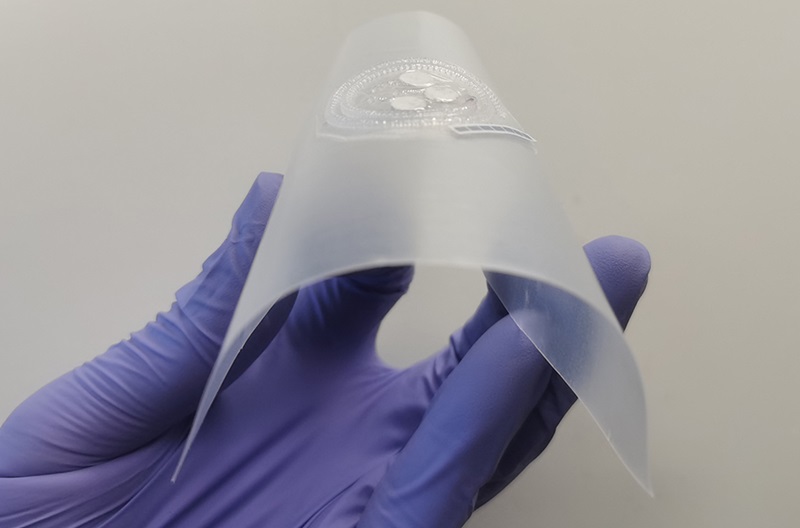Radial Access to Revolutionize Field of Peripheral Artery Interventions
|
By HospiMedica International staff writers Posted on 18 Oct 2023 |

Peripheral artery interventions like angioplasty and stenting are generally carried out to treat vascular conditions causing blood flow obstruction to the lower extremities. These procedures are usually done by gaining access through the femoral artery located in the thigh. However, there is growing interest in a different method that involves accessing the arteries in the wrist or forearm, known as radial access. Now, a new study has demonstrated that radial access for peripheral artery interventions can lead to favorable safety outcomes.
The study, conducted by a team of researchers from University Hospitals (Cleveland, OH, USA), focused on the safety and practicality of using radial access for complex vascular interventions in the lower limbs. The study involved 120 patients across eight U.S. centers from June 2020 to June 2021. The average age of the participants was roughly 69, and nearly 32% were women. The study addressed various types of vascular lesions, primarily in femoro-popliteal and iliac vessels. Out of the patients, 112 (or 93.3%) met the primary effectiveness goals. Only one patient needed to switch to femoral access to complete the treatment. Additionally, 30 patients needed one or more extra access points for successful treatment, including femoral, tibial, and pedal sites. No severe side effects were linked to the procedure. The average time for the procedure was 74 minutes, and the average time until the patient could walk was about 3 and a half hours. On the same day, 93.3% of patients were discharged. After 30 days, nearly all patients showed ultrasound-confirmed radial artery openness.
The study's findings indicate that radial access for peripheral artery procedures offers encouraging safety benefits. Specifically, the rate of complications at the access site and major adverse cardiovascular events was noticeably lower than with the traditional femoral approach. The research also showed similar success rates and long-term health outcomes for both methods. Radial access appears to be a reliable and safe alternative for these types of vascular interventions. According to the researchers, opting for the wrist or forearm offers several advantages over the usual femoral route, such as greater patient comfort, fewer bleeding issues, and quicker recovery time. To validate these results, more extensive research and clinical trials are needed to make radial access a standard practice in this medical field.
“This study contributes to the growing body of evidence supporting the use of radial access for peripheral artery interventions,” said Mehdi Shishehbor, DO, MPH, PhD, president of University Hospitals Harrington Heart & Vascular Institute and lead author of the study. “As medical professionals continue to explore different approaches, advances in technology and techniques are expected to further enhance the safety and efficacy of these procedures. With its potential to improve patient outcomes and satisfaction, radial access may revolutionize the field of peripheral artery interventions.”
Related Links:
University Hospitals
Latest Critical Care News
- AI Automatically Determines Insulin Dosing for Improved Blood Sugar Control in Hospitalized Patients
- Smartphone Face-Screening Tool Helps Paramedics Identify Stroke in Seconds

- Sweat Health Monitor Measures Levels of Disease Markers
- New, Simple Clinical Test Detects Rare Life-Threatening Genetic Heart Condition
- Noninvasive Laser Therapy for Stroke Treatment Could Help Avoid Surgical Removal of Blood Clot
- Painless Skin Patch Continuously Monitors Vital Health Biomarkers
- Novel Cardiac Implant Provides Life-Saving Treatment for Heart Failure Patients
- Smart Bandages to Revolutionize Treatment of Chronic Wounds
- Portable System for Warming Blood and IV-Fluids Reduces Hypothermia Risk in Hemorrhaging Patients
- AI-Generated Real-Time Alerts for Declining Health Speeds Up Treatment and Reduces Hospital Deaths
- Breakthrough Computational Method Predicts Sudden Cardiac Death
- Ingestible Microbiome Sampling Pill to Help Diagnose Wide Range of Health Conditions
- GPS-Like Smart Pills with AI Provide Real-Time 3D Monitoring Of Gastrointestinal Health
- Bioengineering Breakthrough to Improve Bone Regeneration Treatments
- Soft Robots with Electronic Skins and Artificial Muscles to Provide Medical Treatment
- AI Camera Technology Helps Doctors Quickly Assess Severity of Infections
Channels
Critical Care
view channel
AI Automatically Determines Insulin Dosing for Improved Blood Sugar Control in Hospitalized Patients
Hospitalized patients with complex dietary restrictions frequently experience hyperglycemia, or elevated blood sugar levels, which affects about one-quarter to one-half of such patients, potentially leading... Read more
Smartphone Face-Screening Tool Helps Paramedics Identify Stroke in Seconds
Strokes, affecting millions globally, occur when the brain's blood supply is compromised, depriving brain tissue of essential oxygen and nutrients. Common symptoms include confusion, loss of movement control,... Read morePatient Care
view channelFirst-Of-Its-Kind Portable Germicidal Light Technology Disinfects High-Touch Clinical Surfaces in Seconds
Reducing healthcare-acquired infections (HAIs) remains a pressing issue within global healthcare systems. In the United States alone, 1.7 million patients contract HAIs annually, leading to approximately... Read more
Surgical Capacity Optimization Solution Helps Hospitals Boost OR Utilization
An innovative solution has the capability to transform surgical capacity utilization by targeting the root cause of surgical block time inefficiencies. Fujitsu Limited’s (Tokyo, Japan) Surgical Capacity... Read more
Game-Changing Innovation in Surgical Instrument Sterilization Significantly Improves OR Throughput
A groundbreaking innovation enables hospitals to significantly improve instrument processing time and throughput in operating rooms (ORs) and sterile processing departments. Turbett Surgical, Inc.... Read moreHealth IT
view channel
Machine Learning Model Improves Mortality Risk Prediction for Cardiac Surgery Patients
Machine learning algorithms have been deployed to create predictive models in various medical fields, with some demonstrating improved outcomes compared to their standard-of-care counterparts.... Read more
Strategic Collaboration to Develop and Integrate Generative AI into Healthcare
Top industry experts have underscored the immediate requirement for healthcare systems and hospitals to respond to severe cost and margin pressures. Close to half of U.S. hospitals ended 2022 in the red... Read more
AI-Enabled Operating Rooms Solution Helps Hospitals Maximize Utilization and Unlock Capacity
For healthcare organizations, optimizing operating room (OR) utilization during prime time hours is a complex challenge. Surgeons and clinics face difficulties in finding available slots for booking cases,... Read more
AI Predicts Pancreatic Cancer Three Years before Diagnosis from Patients’ Medical Records
Screening for common cancers like breast, cervix, and prostate cancer relies on relatively simple and highly effective techniques, such as mammograms, Pap smears, and blood tests. These methods have revolutionized... Read morePoint of Care
view channel
POCT for Infectious Diseases Delivers Laboratory Equivalent Pathology Results
On-site pathology tests for infectious diseases in rural and remote locations can achieve the same level of reliability and accuracy as those conducted in hospital laboratories, a recent study suggests.... Read more
Cartridge-Based Hemostasis Analyzer System Enables Faster Coagulation Testing
Quickly assessing a patient's total hemostasis status can be critical to influencing clinical outcomes and using blood products. Haemonetics Corporation (Boston, MA, USA) has now obtained 510(k) clearance... Read more
Critical Bleeding Management System to Help Hospitals Further Standardize Viscoelastic Testing
Surgical procedures are often accompanied by significant blood loss and the subsequent high likelihood of the need for allogeneic blood transfusions. These transfusions, while critical, are linked to various... Read moreBusiness
view channel
BD Acquires Edwards Lifesciences' Critical Care Product Group for USD 4.2 Billion
BD (Becton, Dickinson and Company, Franklin Lakes, NJ, USA) and Edwards Lifesciences (Irvine, CA, USA) have entered into a definitive agreement under which BD will acquire Edwards' Critical Care product... Read more

















